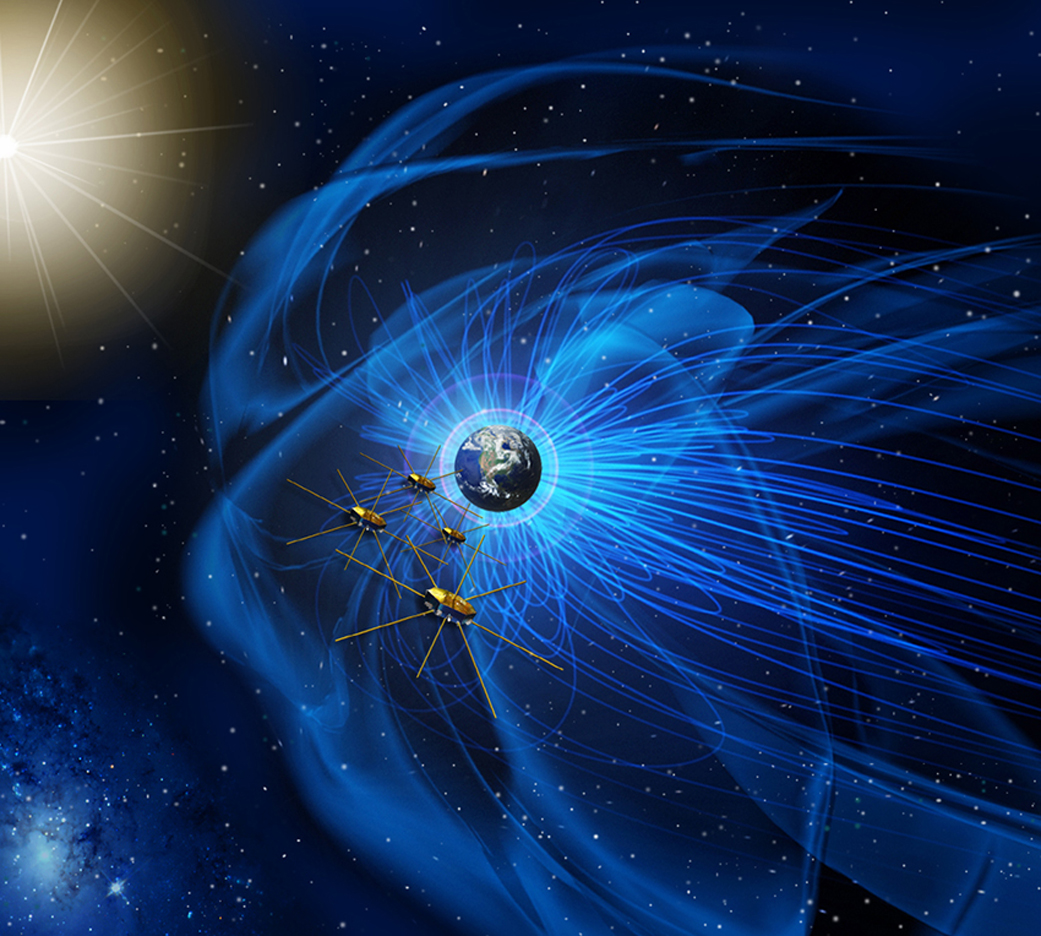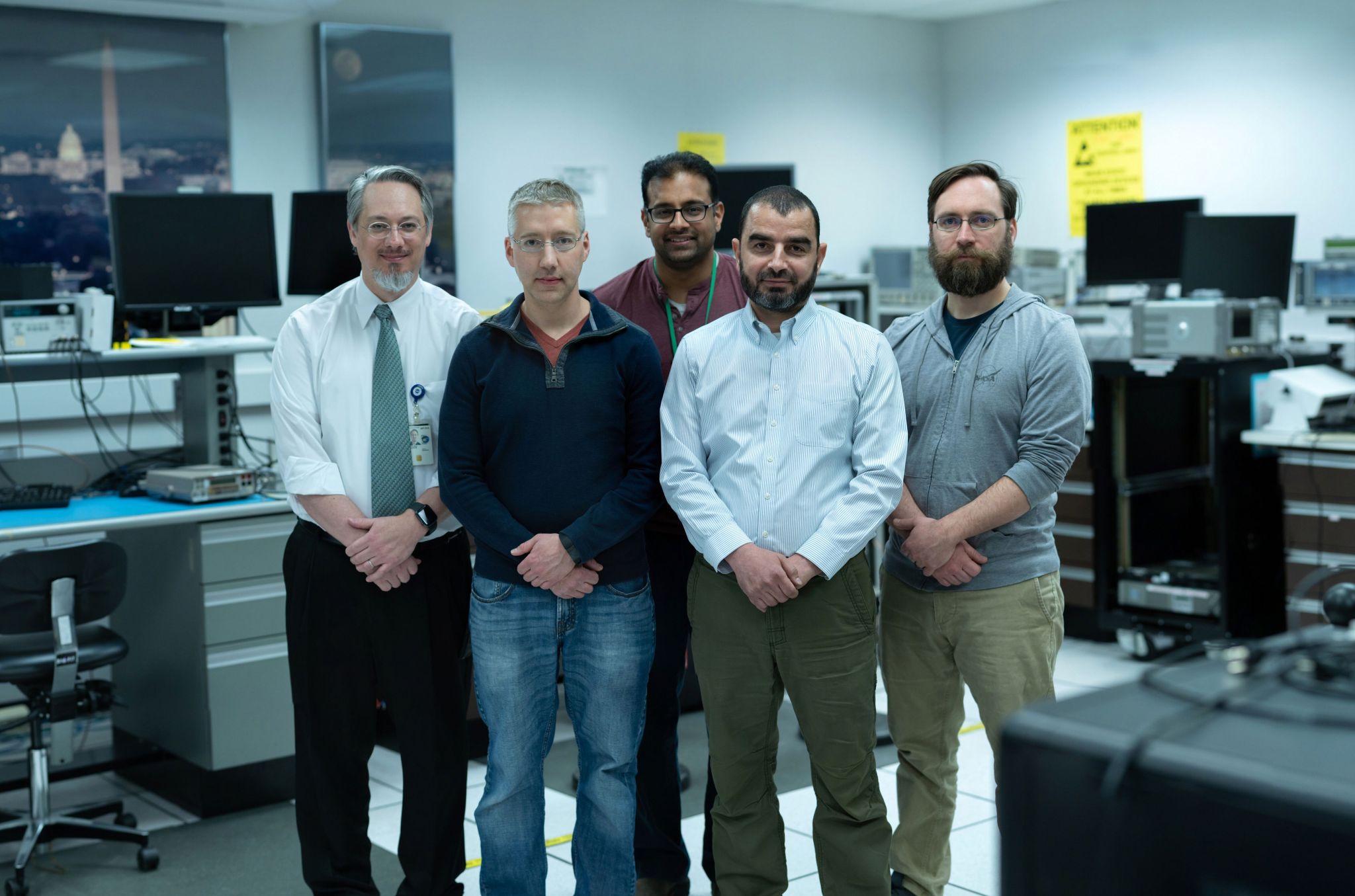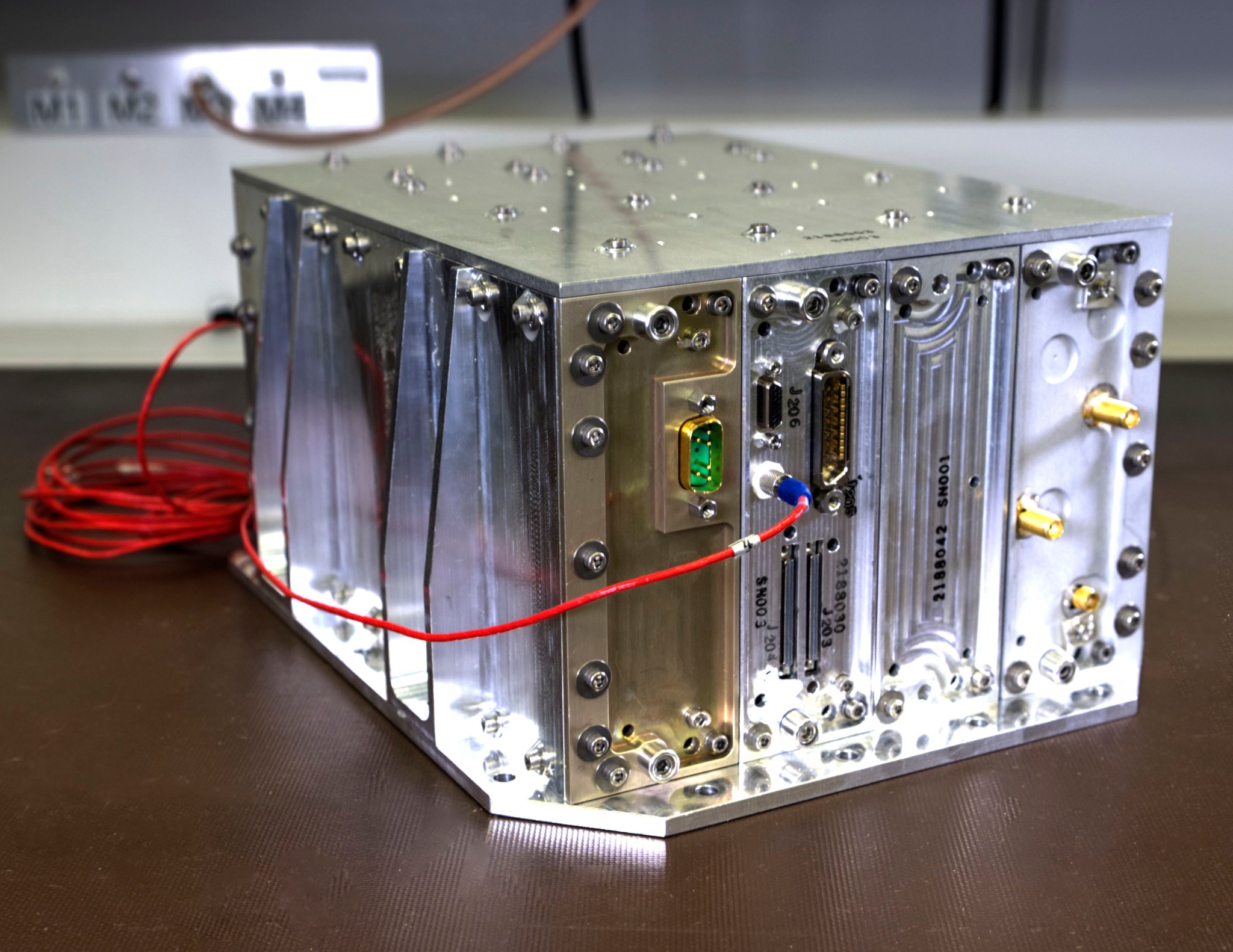
GPS, a satellite-based navigation system used by an estimated four billion people worldwide to figure out where they are on Earth at any moment, could be used to pilot in and around lunar orbit during future Artemis missions.
A team at NASA is developing a special receiver that would be able to pick up location signals provided by the 24 to 32 operational Global Positioning System satellites, better known as GPS. GPS is operated by the U.S. military about 12,550 miles above Earth’s surface, and is open to anyone with a GPS receiver. These same GPS signals provide location data used in vehicle navigation systems, interactive maps, and tracking devices of all types, among many other applications.
Such a capability could soon also provide navigational solutions to astronauts and ground controllers operating the Orion spacecraft, the Gateway in orbit around the Moon, and lunar surface missions.
GPS is a system made up of three parts: satellites, ground stations, and receivers. The ground stations monitor the satellites, and a receiver, like those found in a phone or car, is constantly listening for a signal from those satellites. The receiver calculates its distance from four or more satellites to pinpoint a location. Instead of navigating streets on Earth, a spacecraft equipped with an advanced GPS receiver may soon be paired with precise mapping data to help astronauts track their locations in the vast ocean of space between the shores of Earth and the Moon, or across the craterous lunar surface.
Navigation services near the Moon have historically been provided by NASA’s communications networks. The GPS network, which has more satellites and can better accommodate additional users, could help ease the load on NASA’s networks, thereby freeing up that bandwidth for other data transmission.
“What we’re trying to do is use existing infrastructure for navigational purposes, instead of building new infrastructure around the Moon,” said engineer and Principal Investigator Munther Hassouneh at Goddard Space Flight Center in Greenbelt, Maryland.
NASA has been working to extend GPS-based navigation to high altitudes, above the orbit of the GPS satellites, for more than a decade and now believes its use at the Moon, which is about 250,000 miles from Earth, can be done.
“We’re using infrastructure that was built for surface navigation on Earth for applications beyond Earth,” said Jason Mitchell, chief technologist for Goddard’s Mission Engineering and Systems Analysis Division. “Its use for higher-altitude navigation has now been firmly established with the success of missions like Magnetospheric Multiscale mission (MMS) and the Geostationary Operational Environmental Satellites (GOES). In fact, with MMS, we’re already nearly half way to the Moon.”
The lunar GPS receiver is based on the Goddard-developed Navigator GPS, which engineers began developing in the early 2000s specifically for NASA’s MMS mission, the first-ever mission to study how the Sun’s and Earth’s magnetic fields connect and disconnect. The goal was to build a spacecraft-based receiver and associated algorithms that could quickly acquire and track GPS radiowaves even in weak-signal areas. Navigator is now considered an enabling technology for MMS.
Without Navigator GPS, the four identically equipped MMS spacecraft couldn’t fly in their tight formation in an orbit that reaches as far as 115,000 miles from Earth’s center — far above the GPS constellation and about halfway to the Moon.
“NASA has been pushing high-altitude GPS technology for years,” said Luke Winternitz, the MMS Navigator receiver system architect. “GPS around the Moon is the next frontier.”
Technology Enhancements Required
Extending the use of GPS to the Moon will require some enhancements over MMS’s onboard GPS system, including a high-gain antenna, an enhanced clock, and updated electronics.
The team is addressing those challenges — thanks to Goddard’s years-long investment in important enabling technologies, particularly in the area of miniaturization.
“Goddard’s IRAD (Internal Research and Development) program has positioned us to solve some of the problems associated with using GPS in and around the Moon,” Mitchell said, adding that a smaller, more robust GPS receiver could also support the navigational needs of SmallSats, including a new SmallSat platform Goddard engineers are now developing.
The team’s current lunar GPS receiver concept is based on NavCube, a new capability developed from the merger of MMS’s Navigator GPS and SpaceCube, a reconfigurable, very fast flight computer platform. The more powerful NavCube, developed with IRAD support, was recently launched to the International Space Station where it is expected to employ its enhanced ability to process GPS signals as part of a demonstration of X-ray communications in space.
The GPS processing power of NavCube combined with a receiver for lunar distances should provide the capabilities needed to use GPS at the Moon. Earlier this year, the team simulated the performance of the lunar GPS receiver and found promising results. By the end of this year, the team plans to complete the lunar NavCube hardware prototype and explore options for a flight demonstration.
“NASA and our partners are returning to the Moon for good,” Mitchell said. “NASA will need navigation capabilities such as this for a sustainable presence at the Moon, and we’re developing enabling technologies to make it happen.”
For more Goddard technology news, go to: https://www.nasa.gov/wp-content/uploads/2019/06/spring_2019_final_web_version.pdf?emrc=188e7d
By Lori Keesey
NASA’s Goddard Space Flight Center





























